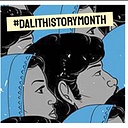In Dalit History — Remembering who we lost : Anitha
Anitha was a young Dalit girl of only 17. Her background is not different from that of many young kids from marginalized communities in India. Poor, segregated, struggling. Her father is a daily wage laborer whose job is lifting and moving heavy sacks of goods on his back. Her mother passed away when she was young and was raised by her father and grandmother.
Anitha tried to surpass the hurdles presented by her Caste, class, and gender with intelligence and spirit. She aspired to become a doctor. “A social-oriented doctor”, in her own words. “ I will become a doctor and come back and help my people”, she says in a video shot by activist Gowthama Meena. Taking a bus every day to school, sometimes arriving late because of housework, brushing off the insults, the insecurities, studying, being fierce and relentless meant that she scored 1176 marks out of 1200 (98%) in her high school examinations. Her focus and determination did pay off.
It is important to understand what this meant to Anitha at that time. She understood that her perseverance had given her a real shot at life itself. First, this meant she had secured an opportunity to pursue her personal dream to study medicine. Second, she had a chance to release her family from the transgenerational clutches of Caste. She has said “If I get into medical school, I will become the first Dalit doctor in this district! Can you imagine?”
This is an incredibly inspiring and incredibly poignant moment. None of the doors had opened by themselves for Anitha — she had moved mountains out of the way first. At this point, Anitha should simply have gone on to university, become a practicing doctor, lived her life, and continued to make us proud.
So what happened?
In India, many states follow their own regional “State curriculum” for high schools. In addition to that curriculum, a “Central” (Federal) curriculum, is also made available throughout the country. Most students in the country, study under their state’s curriculums. The central curriculum is often seen as elite and presented by many as more “more thorough, more rigorous, more thought provoking” in its academic content. In reality, there exists no evidence to show that central-educated students fare better in their professional lives in comparison to state-educated fellows. Several states have also formally reaffirmed the same[1].
Key is the fact is that state curriculums often offer students learning in a language of instruction that accessible and is in the student’s mother tongue. In Anitha’s case, Tamil. Central curriculums demands instruction be either Hindi or English. Most Tamilians speak, read, and write only in Tamil. Both Hindi and English are almost just as foreign to Tamilians as German or Cantonese or Yoruba would be. What the language barriers effectively set up is a Caste-based class divide, where more urban, “upper” Caste and upper class students gravitate towards central education while a mass of lower Caste, rural, and lower class students, study within the state standards.
In this context, the central government abruptly instituted a singular policy that mandated all students looking to apply for medical school, take a national entrance exam. Senselessly, this National Eligibility and Entrance Test or NEET, includes content not taught in the state curriculum but taught in the central curriculum.
This gives central-educated students an advantage while state-educated students can’t figure out why they were being tested on syllabi they had never been taught!
When 88% of all the students that took the NEET exam in Tamil Nadu, were state-educated, this is, at best, a misguided policy.
“Upper” Caste and upper class students studying under the state curriculum could afford to pay for extracurricular NEET preparation courses after regular school hours to prepare for content they were likely missing out on. Students like Anitha, cannot. When NEET results came out, Anitha had suddenly not scored enough marks to qualify for a medical school admission. ( If her state board results were the only consideration for admission, Anita would have easily gotten into any of the state’s medical schools. ) However, she had scored enough to be eligible for admission to several prestigious engineering programs throughout the state.
Many well-meaning friends and family told her she should just join the engineering program and be done with it. But engineering was not what she had bled and toiled for. She had lost her mother because of their family’s inability to provide her with sufficient and timely medical care. By studying to become a doctor herself, she could ensure that that didn’t happen to anyone else in her community. And she wanted her rightfully-earned, well-deserved, place in medical school.
Anitha was among the handful of students who resisted NEET, ran campaigns against the policy asserting that NEET was Casteist and that it disproportionately targeted Dalit and Adivasi students for failure. She had personally met with and appealed to several politicians in Tamil Nadu and was part of a team of students who took the case all the way to the Supreme Court of India.
It was never that Anitha hadn’t fought or that she hadn’t fought enough. It is that everyone reaches a limit of suffering and she had hit hers. The worst thing in the life of a young person is to be denied the right to dream and hope.
So, Anitha, denied her own vision of her future, through circumstances that were grossly unjust and out of her control, felt at the end of her reserves, and took that final fatal step.
This step is the burden we, as a community have to bear. Today in #DalitHistory, we remember Anita and wish her her dreams in another world. Rest in peace.
